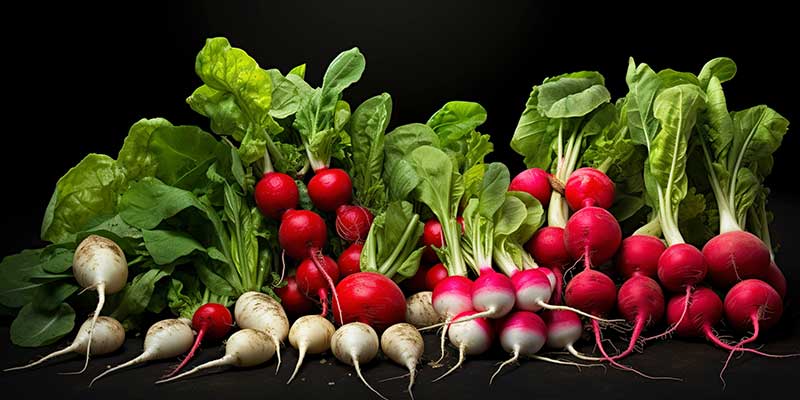
Radishes (Raphanus sativus) are fast-maturing, colourful root vegetables prized for their crisp texture and peppery bite. Perfect for beginners, urban growers and professional chefs, radishes deliver big flavour from a small footprint. Whether grown as quick salad roots, nutrient-dense microgreens, sprouted shoots or deep-rooted cover crops, radishes are a versatile addition to any rotation or kitchen.
Common Names: Radish, Daikon, Mooli, Watermelon Radish, Cherry Belle, French Breakfast.
In this guide we cover everything you need to know about growing radishes from seed — benefits, varieties, seed uses (sprouts, microgreens, green manure), seasonal timing, soil mixes (including vermiculite), pests, harvesting and a handful of simple recipes. Blend these tips with your local conditions and you’ll be harvesting crisp radishes in as little as three weeks.
Table of Contents
Why Grow Radishes? Benefits for Urban Farmers, Home Gardeners & Chefs
Radishes are one of the fastest rewards in gardening — many varieties are ready in 3–4 weeks — making them ideal for impatient growers and intensive urban plots. They offer a compact, high-yield crop for small spaces and containers, provide continuous harvests through succession sowing and contribute to sustainable rotations.
- Quick results: harvest in weeks, not months.
- Space efficient: perfect for containers, narrow beds and intercropping.
- Culinary variety: crisp crunch for salads, mild Daikon for pickles and roasting.
- Soil benefits: taproots loosen compacted soil; certain types (tillage/daikon) are excellent bio-drillers for clay busting.
- Multi-use seed: many radish seeds can be sprouted or grown as microgreens for continuous kitchen harvests.
Radishes are also beginner-friendly — they tolerate a range of soils, are forgiving of minor mistakes and respond well to simple organic care.
Understanding Radish Varieties: Choose the Right Type for Your Space and Taste
Below are common varieties you’ll see at seed suppliers, with a short product-style line to help choose the right one for your garden or kitchen.
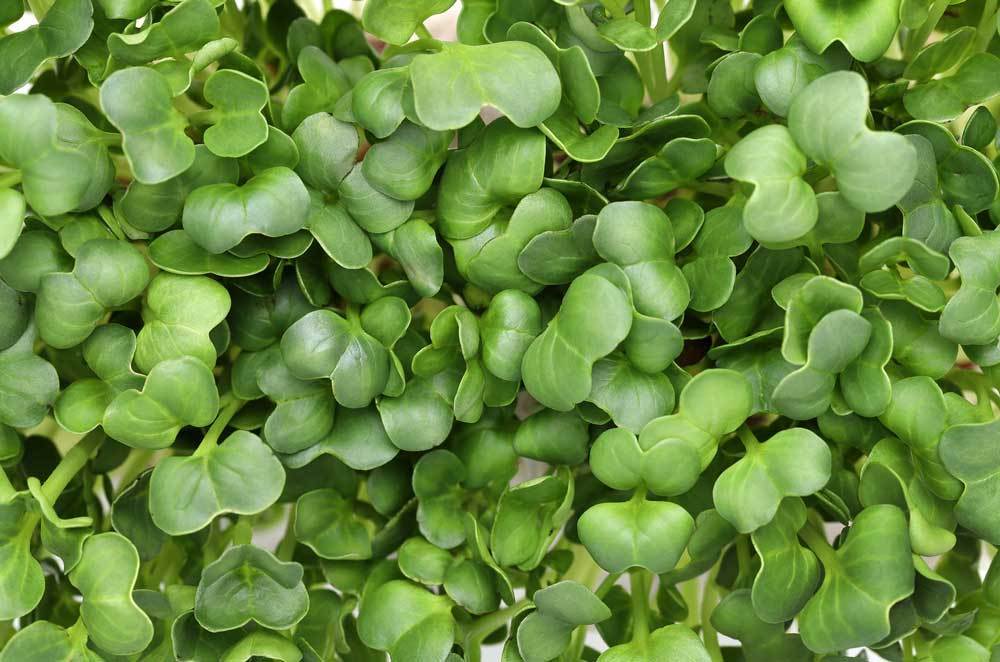 Daikon
Daikon
Long, white, mild — ideal for pickling, winter storage and soil improvement.
Daikon (also called mooli) produces long, cylindrical roots up to 30–40cm. Mild and versatile, it’s a kitchen staple in Asian cuisine and a top choice for cover cropping because its thick taproot penetrates compacted soils.
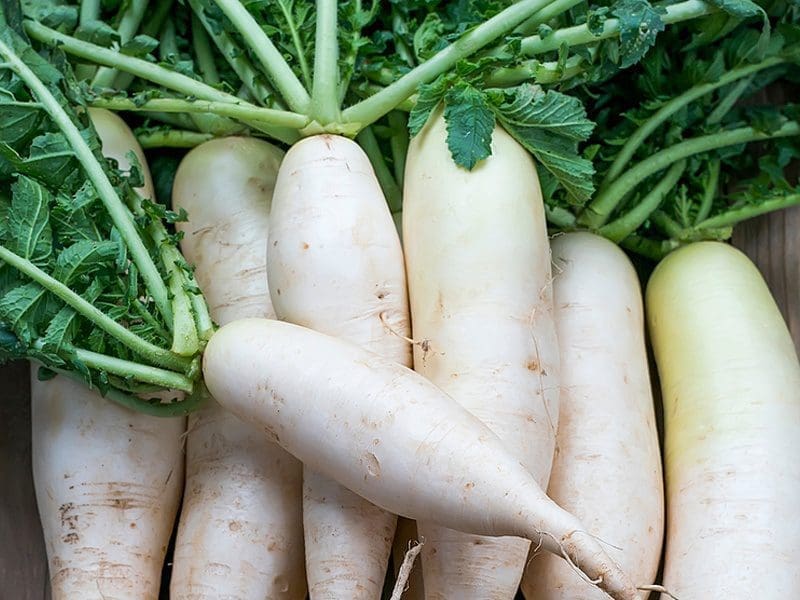 White Icicle
White Icicle
Elongated, white, crisp — fast growing and attractive in spring beds.
White Icicle is a slender, crunchy radish that matures quickly and looks elegant sliced thin in salads.
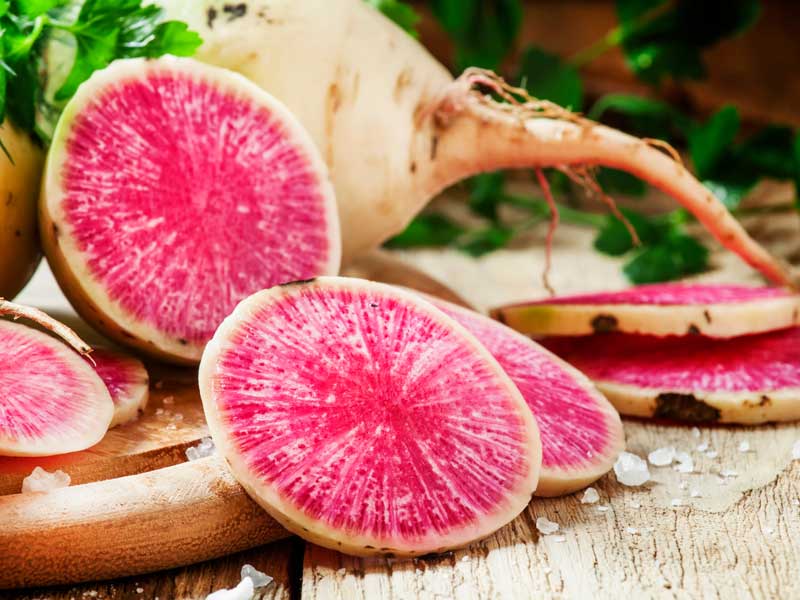 Watermelon Radish
Watermelon Radish
Green-white exterior with a vivid pink interior — showy and sweet when mature.
Watermelon radish offers dramatic colour inside; mildy sweet and excellent raw for platters or pickles.
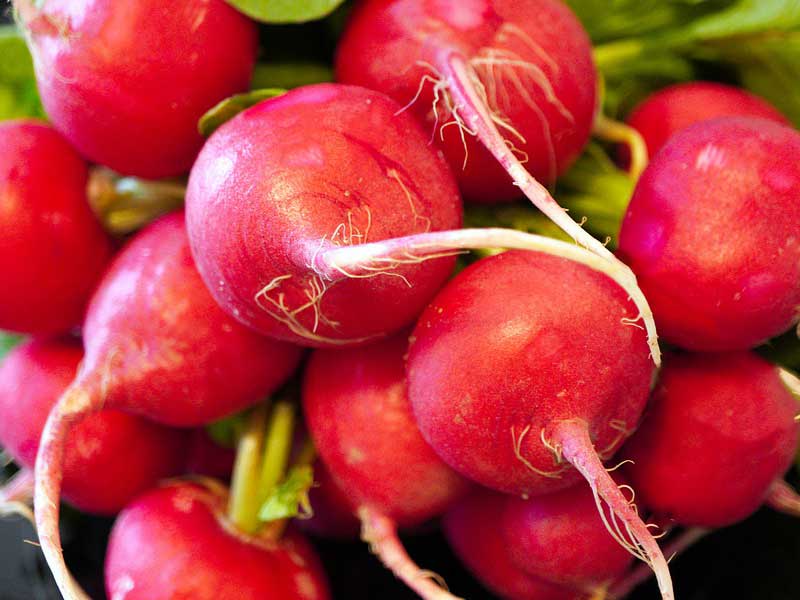 Cherry Belle
Cherry Belle
Classic round red radish — crunchy, mild and fast.
Cherry Belle is the go-to for quick salads; small, round and often ready in three to four weeks.
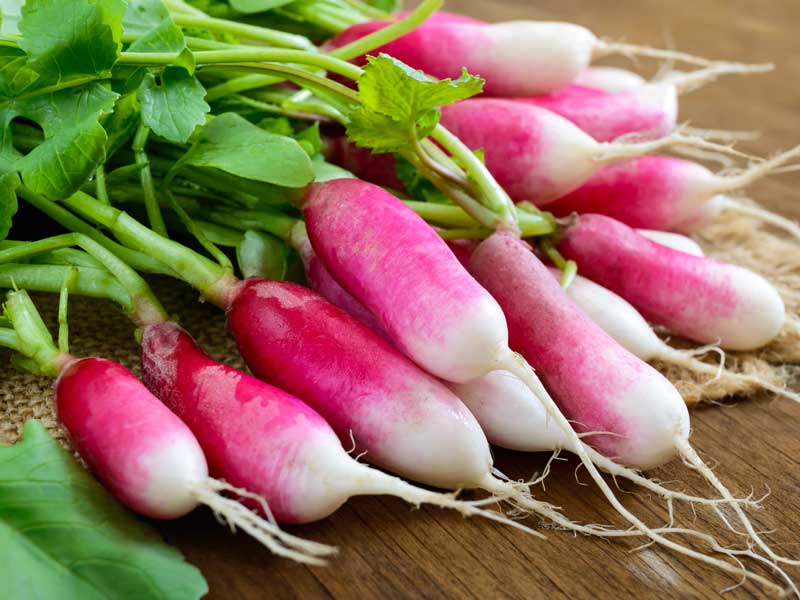 French Breakfast
French Breakfast
Elongated, red with white tip — snappy, peppery and ideal for dipping.
French Breakfast radishes are slender and slightly spicy; a favourite for snacking straight from the garden.
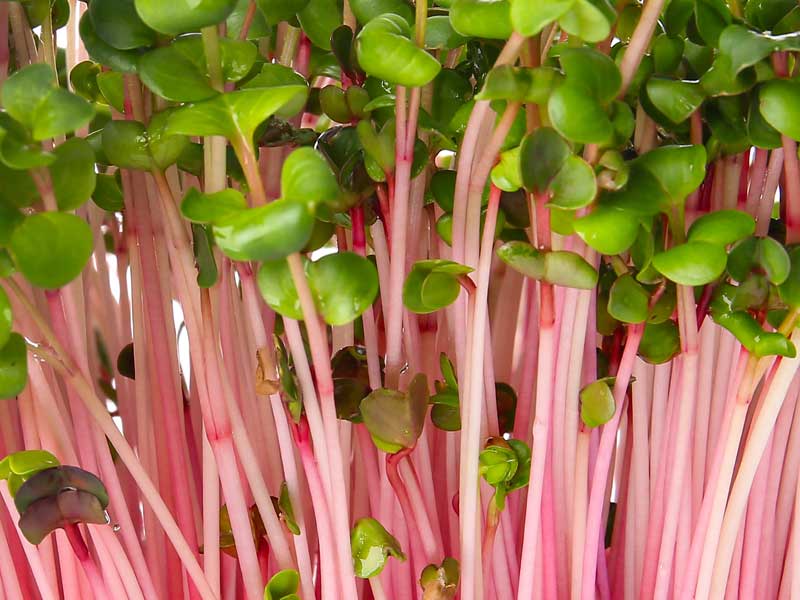 Pink Radish
Pink Radish
Bright pink roots with crisp flesh — colourful and reliable.
Pink varieties provide the same quick growth as classic types with a softer colour palette.
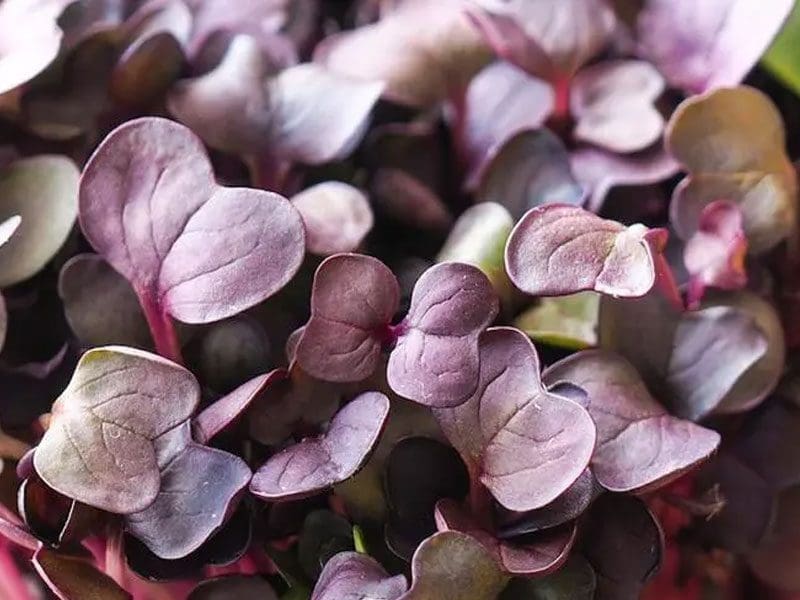 Purple Radish
Purple Radish
Deep violet skin with white flesh — bold appearance and good flavour.
Purple radishes stand out on the plate and pair well with mild greens.
Tillage Radish
Large, deep-rooted — grown for soil structure and bio-drilling.
Tillage radish (also called forage or oilseed radish in some mixes) is designed for cover cropping; its large taproot breaks up compacted layers and scavenges nutrients for the next cash crop.
Sprouting, Microgreens & Green Manure — What’s the Difference?
Radish seed is multi-purpose. Understanding the differences helps you decide how to use each packet:
- Sprouting: Seeds are soaked and grown for 2–5 days until tiny shoots appear. Sprouts are compact, crunchy and nutrient-dense — ideal for sandwiches and salads. Most radish seeds sprout well and produce peppery shoots.
- Microgreens: Seeds are sown densely in a shallow tray and harvested at the cotyledon/first true leaf stage (7–14 days). Microgreens deliver concentrated flavour, attractive colour (especially colour mixes and watermelon) and high nutritional value for chefs and home cooks.
- Green manure / cover crop: Varieties like Daikon and Tillage radish are sown in autumn/winter to grow large roots that loosen soil, recycle nutrients and suppress weeds. They are typically grown to maturity (or near maturity) then incorporated or left to decompose as mulch.
Quick note on seed types: Bulk treated seeds are often sold for field planting to protect against storage pests and improve germination reliability in large scale sowing. Untreated or organic seed is preferred for sprouting and microgreens because sprouts are eaten raw — always choose certified food-grade seed for edible shoots.
How to Grow Radishes from Seed — Step-by-Step
1. Pick the right time: Radishes prefer cool weather. Sow in early spring and again in late summer/early autumn for best results. In mild climates, short winter sowings of Daikon or tillage radish work well as cover crops.
2. Site selection & soil prep: Choose full sun or light shade. Work the soil to 15–20cm depth and remove stones. Add well-rotted compost to improve texture and fertility.
3. Use vermiculite in seed mixes (optional): Mixing a small proportion (10–20%) of vermiculite with potting mix or topsoil improves moisture retention and seed-to-soil contact for even germination — especially useful in trays for microgreens and container planting.
4. Sowing: Sow seeds 1cm deep. For roots, space seeds 2–3cm apart and thin to 3–5cm depending on variety. Keep rows about 12–15cm apart. For microgreens, broadcast densely and harvest early.
5. Water & mulch: Keep soil consistently moist until germination, then water evenly. A light mulch helps maintain moisture and reduces temperature swings.
6. Thinning & care: Thin to the recommended spacing to avoid misshapen roots. Monitor for flea beetles and use floating row covers if needed. Rotate radishes yearly to reduce root diseases.
7. Harvest: Most small salad radishes are ready in 3–4 weeks. Daikon and tillage radishes take longer (6–12 weeks depending on size). Harvest promptly — delayed roots can become woody.
- Container tips: Use at least 15–20cm depth for round varieties; deeper pots for Daikon.
- Succession sowing: Sow every 10–14 days for a continuous harvest through the season.
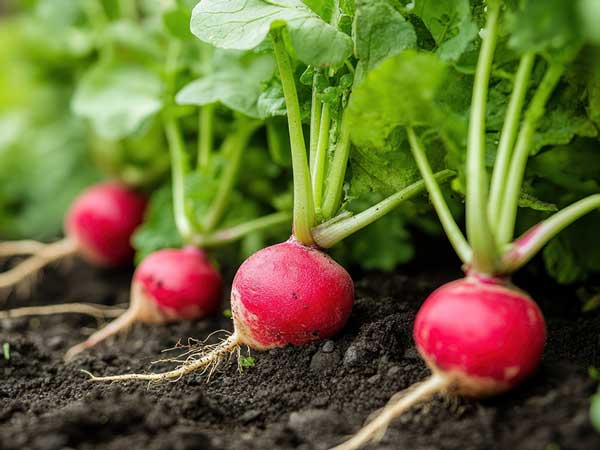
Bulk Seed & Treated Seed — What You Need to Know
Suppliers often sell bulk seed that’s been treated for storage and field performance. Treated seed helps prevent damping off and protects against storage pests — useful for large-scale field sowings. However, seeds for sprouts and microgreens must be untreated and certified food-grade to avoid chemical residues. If you plan to eat sprouts or shoots raw, always choose untreated seed labelled for sprouting.
Soil & Vermiculite Tips
Radishes prefer cool soil (8–20°C). In hot weather they bolt (flower & go to seed) and roots become pithy. For spring crops, sow as soon as the soil can be worked. For autumn, sow after the heat of summer passes.
Vermiculite use: When mixing potting blends or seed starting mixes, add vermiculite to improve moisture retention and aeration. It’s particularly helpful for microgreen trays and container sowings where consistent moisture is critical.
Troubleshooting Common Radish Growing Problems
- Poor germination: Check seed age, depth and moisture. Fresh seed plus consistent dampness improves results.
- Flea beetles: Small holes in leaves; use row covers and encourage predatory insects.
- Bolting: High temperatures trigger flowering; sow earlier or later for cooler conditions.
- Woody roots: Harvest on time; avoid letting roots become oversized.
- Root maggots: Rotate beds and use barriers at sowing.
Harvesting, Storing & Using Radishes — Benefits, Uses & Recipes
Harvest when roots are firm and the size you prefer. Gently pull the root, trim greens and store roots in a plastic bag in the fridge for up to a week. Greens are edible — use them in pestos or sautés.
Simple Recipes & Uses
- Quick radish salad: Thinly slice radishes, mix with lemon vinaigrette, sea salt and chopped herbs.
- Roasted radishes: Toss halved radishes with olive oil, roast at 200°C for 20–25 minutes — sweetness develops and pepperiness softens.
- Pickled watermelon or daikon: Quick pickle in vinegar, sugar, salt and a pinch of chilli for 24 hours.
- Radish butter: Combine softened butter with finely chopped radish and chives for an aromatic spread.
- Radish kimchi: Use sliced daikon or watermelon radish in a simple kimchi ferment with garlic, ginger and chilli flakes.
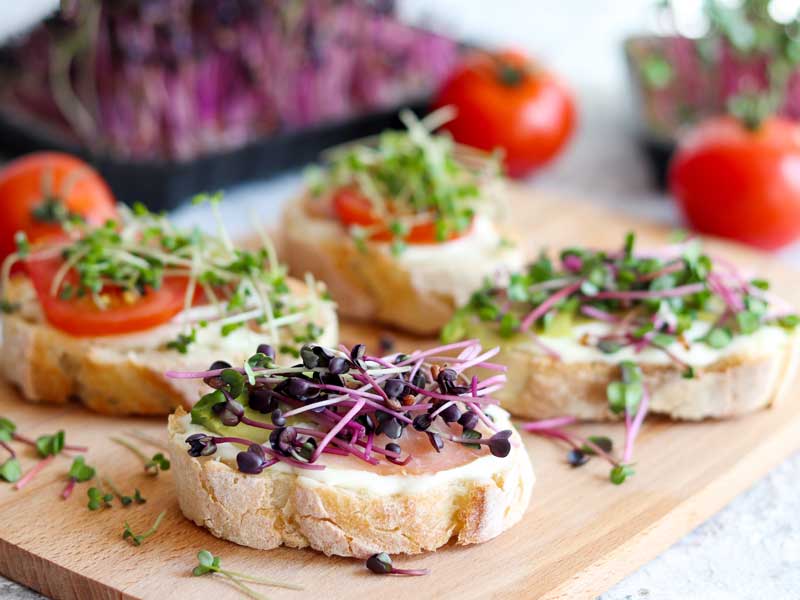
Sprouts & microgreens: Harvested early, radish sprouts and microgreens are intensely flavoured and nutrient-dense — excellent in sandwiches, salads and on canapés.
Green manure & soil benefits: Planting Daikon or Tillage radish as a cover crop in autumn/winter provides deep soil decompaction, weed suppression and nutrient capture. Terminate before seed set and incorporate biomass or use as a mulch layer.
Start Growing Radishes Today!
Whether you’re new to gardening or managing a market patch, radishes are low-risk and high-reward. Succession sow every 10–14 days, rotate crops annually, and experiment with different varieties to discover the flavours and uses you love most.
